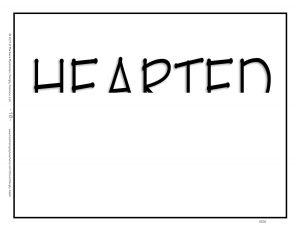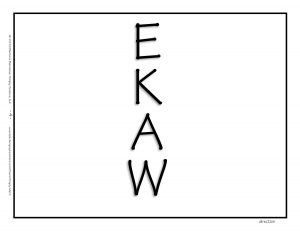   |
Why doesn’t “a piece of cake” simply mean a yummy dessert? Why does it also mean a task that’s very easy?
What about “let them eat cake“, “slice of the pie“, or “icing on the cake“? “Half-hearted” means lack effort or enthusiasm. “Big deal” means something important or consequential. “Wake up” means, well, stop sleeping! All these idioms mean something very different than their literal interpretation.
Idioms can be a challenge for English language learners because they’re not literal. They can be puzzles to solve for all students in your classroom.
I just posted seven new products that are great fun for both my gifted students and my English language learners. Position puzzles can be a fun way to use a bit of logic to figure out a phrase. I’m suggesting them now after posting light activities and light poetry. Consider adding these puzzles to your language arts resources to extend science into that part of the curriculum. How are the puzzles arranged? What do we see when we look at the words? What’s the idiom huddle in the puzzle?
I also created a web page that contains links you can use to have students extend the activity by creating their own puzzles to share with both current and future classmates! Check out the “Idiom of the Day” at thefreedictionary.com. It could be an easy way to continue to infuse idioms into your classroom by projecting them on the wall or printing them for students to view. |


Thanks for the idiom web page. Dinolingo has the 100 most common idioms for kids with definitions:
I have many identified Gifted and Talented students and many English Learners as well in my 4th grade class so these challenging puzzles will be awesome. How do the English Learners do with the puzzles? How much scaffolding and support would an intermediate EL need for these puzzles?
I found that by presenting them as a puzzle to solve there’s less pressure to figure out every puzzle. Having students who solved a puzzle explain strategies can make those students “experts”.
Using several examples helps too! If you’re presenting direction puzzles, you could follow “back up” with “heads up”, “buckle up”, and “catch up”. Students learn the pattern for solving the puzzle and, when it’s solved, you can discuss the unique meaning of the solution to each puzzle. If you’re presenting color puzzles, you could follow “pink slip”, with “in the pink” and “tickled pink”. Use my idiom web page to help you find additional examples of idioms for your students.
Love this idea. Kids feel so smart when they figure them out (so do adults). Thanks for always giving us new ideas.